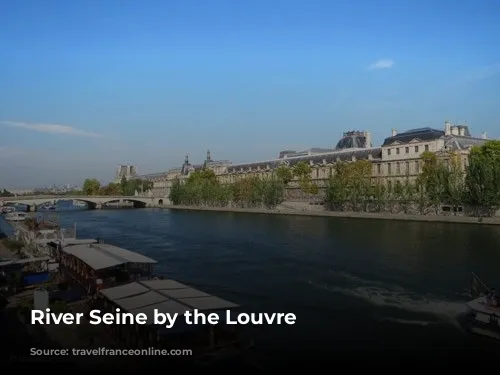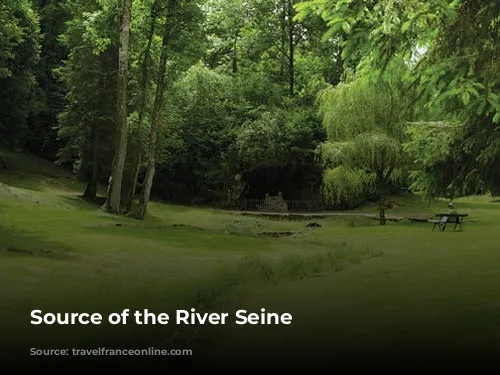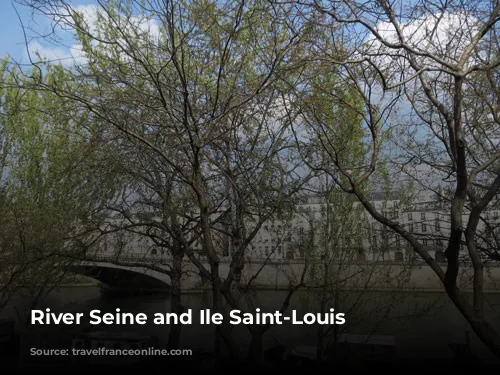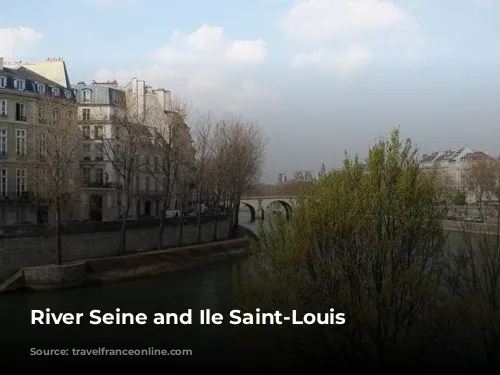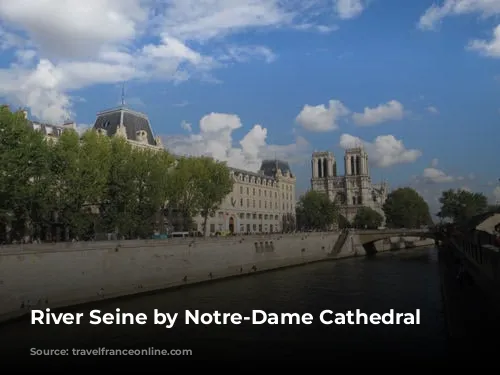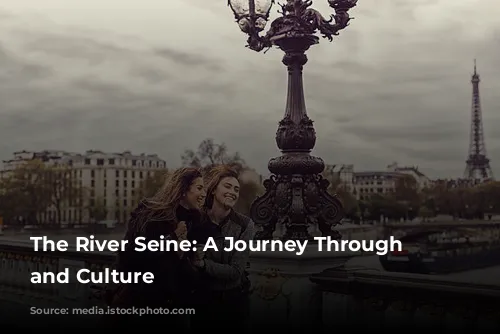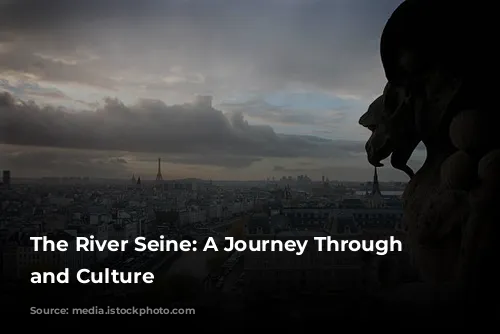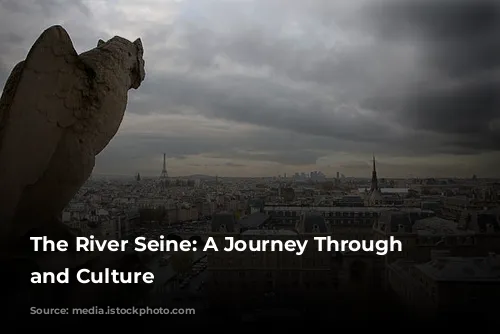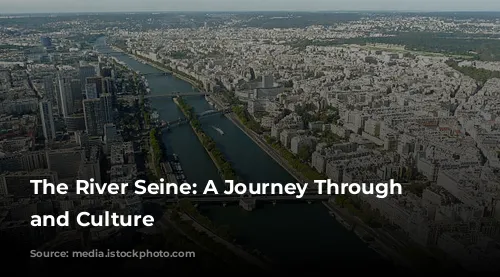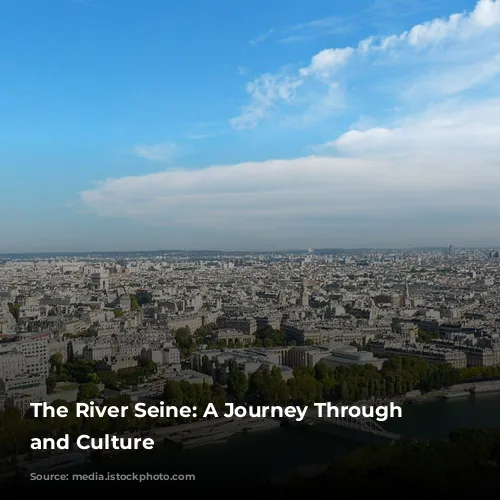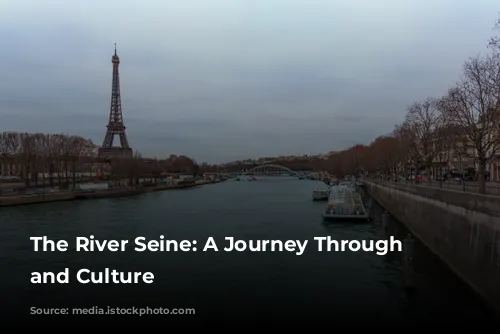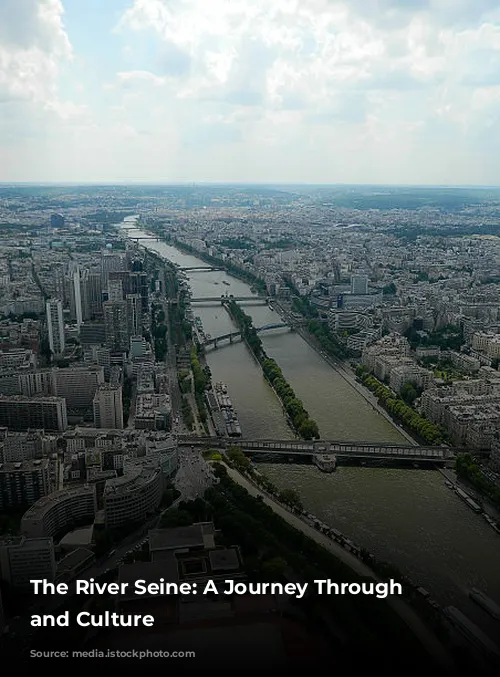The River Seine, a symbol of Paris, originates far from the bustling city. It emerges from the Source-Seine, a site nestled in the Plateau of Langres, a region known for its rolling hills and picturesque landscapes. The source is located within the Côtes d’Or department of the Bourgogne-Franche-Comté region, at an altitude of 446 meters above sea level.
This is where the River Seine begins its journey. The river flows for over 777 kilometers, weaving its way through historic towns and cities like Troyes, Paris, and Rouen. Finally, the Seine flows into the English Channel, creating a broad estuary flanked by the bustling ports of Le Havre and Honfleur.
A River Steeped in History
The Seine’s origins are interwoven with Celtic mythology. The river is named after the Celtic deity Sequana, who was believed to reside at the river’s source. This rich cultural tapestry continues through the ages.
At the source of the Seine, a man-made grotto erected in 1865 shelters a statue embodying the nymph Sequana. This replica of the original work by François Jouffroy depicts Sequana as a graceful young woman standing upon a boat.
The vestiges of a Roman temple once stood near the source and await excavation. The archaeological museum of Dijon showcases offerings and ex-votos unearthed from the surrounding area, providing insights into the region’s rich history.
The Seine in Paris: A Vital Waterway
Flowing through Paris from east to west, the River Seine stretches for 13 kilometers. It forms a vital waterway for the city, serving as a source of transportation, recreation, and inspiration.
The Seine’s importance to Paris is evident in its numerous bridges: 37 bridges, including 4 footbridges, span its waters. These bridges have inspired poets and songwriters, capturing the essence of Parisian romance in songs like “Sous le Pont Mirabeau” and “Sous les Ponts de Paris.”
The Nautes Parisiens: Masters of the Seine
The Nautes Parisiens, or the Corporation of the Boatmen of Paris, have a rich history tied to the Seine. Their origins can be traced back to the Celtic tribe Parisii who settled on the Ile de la Cité, strategically located at the crossing of the River Seine and ancient north-south routes.
The Parisii, skilled navigators, expanded their maritime activities after the Roman conquest. The Nautes Parisiens corporation erected numerous monuments, including the Pilier des Nautes Parisiens (Pillar of the Boatmen), now housed in the Cluny Museum.
The Seine: A Source of Life and Challenge
The River Seine served as a vital water supply for Parisians for centuries.
In medieval Paris, access to running water was scarce. People collected water directly from the river or purchased it from street vendors. Napoleon initiated the construction of the Canal St Martin and Bassin de La Villette in the early 19th century to supply water to public fountains.
The Seine also served as a natural recreational space for Parisians. People would stroll along its banks or swim in its waters.
Floods and Transformations: The River’s Dynamic History
The Seine was known for its unpredictable nature. During harsh winters, it would freeze solid, allowing people to walk across its icy surface. However, with the arrival of spring, massive blocks of ice would break free, often damaging bridges and causing floods.
Throughout history, the Seine has witnessed numerous significant floods. The flood of 1280 destroyed the Grand-Pont (Pont Notre-Dame), while the flood of 1296 submerged all of Paris’ bridges, which were then lined with houses. The flood of 1910, lasting for nine days, caused the water level to rise by 9.50 meters.
The Seine: Shaping the Landscape of Paris
The River Seine has played a significant role in sculpting the geographical features of Paris. Numerous islands and islets have emerged from its waters, shaping the city’s landscape.
The Ile de la Cité was expanded through the consolidation of nearby islands. The Ile St Louis emerged as a new area. The Ile Louviers, once near Ile St-Louis, was connected to the right bank to create what is now Quartier Morland.
The Ile aux Cygnes, an 890-meter-long embankment built in 1827, supported the construction of three Parisian bridges.
The Seine: A River Renewed
The Seine, once wild and unpredictable, continues to evolve and adapt. Natural processes have reshaped the river’s course and the surrounding terrain.
One significant change occurred on the Right Bank, where a broad meander developed. The river shifted course, leaving behind a sizable piece of land that became the Marais (marsh).
In the 11th century, the Knights Templar and monks of the Abbaye de St Martin-des-Champs drained the marsh, reclaiming the land for human habitation.
Today, the banks and quays of the River Seine are vibrant and inviting spaces. They have been transformed into pedestrian-friendly areas with verdant public gardens. Certain stretches of the riverbanks are closed to vehicular traffic, creating tranquil spaces for leisurely strolls.
Stroll along the Seine and discover bouquinistes (booksellers) and inviting benches. Consider embarking on a leisurely river cruise, offering a unique perspective of Paris from the water.
The River Seine: A Place for Reflection
The River Seine itself has become a popular destination. Visitors seek a peaceful escape from the city’s hustle and bustle. Find a spot along its banks and unwind amidst the serenity, away from the crowds.
The River Seine’s journey through time and culture is a testament to its enduring significance. From its humble beginnings in the Plateau of Langres to its role as a vital waterway in Paris, the Seine continues to inspire and enchant all who encounter it.
